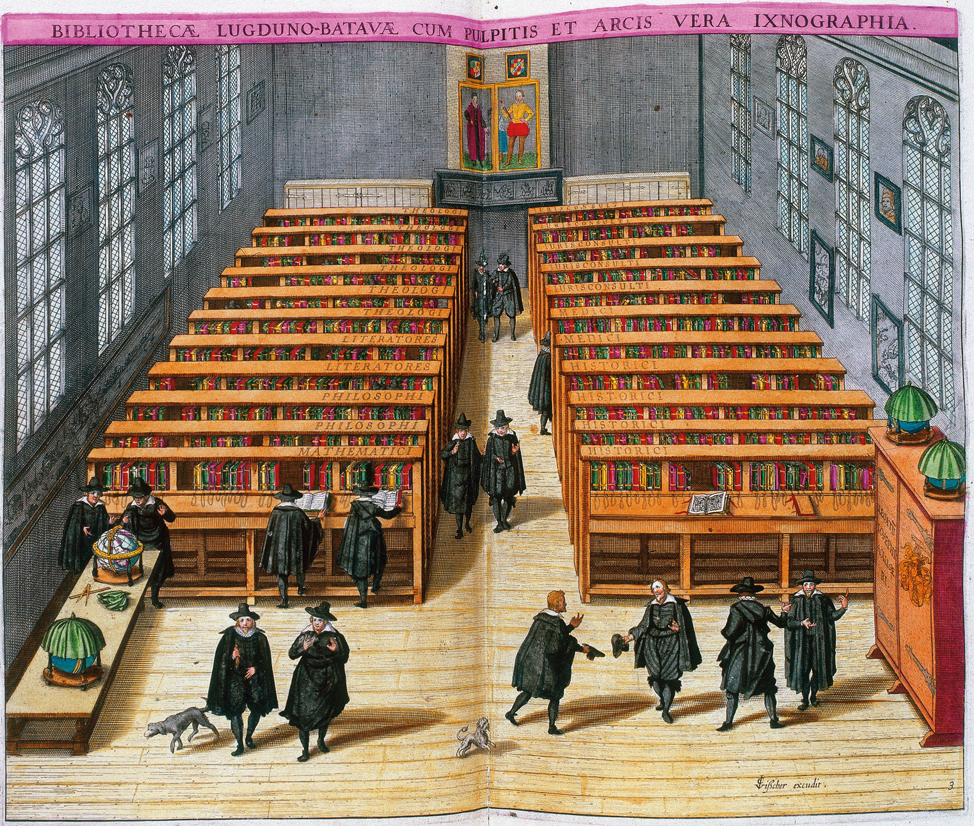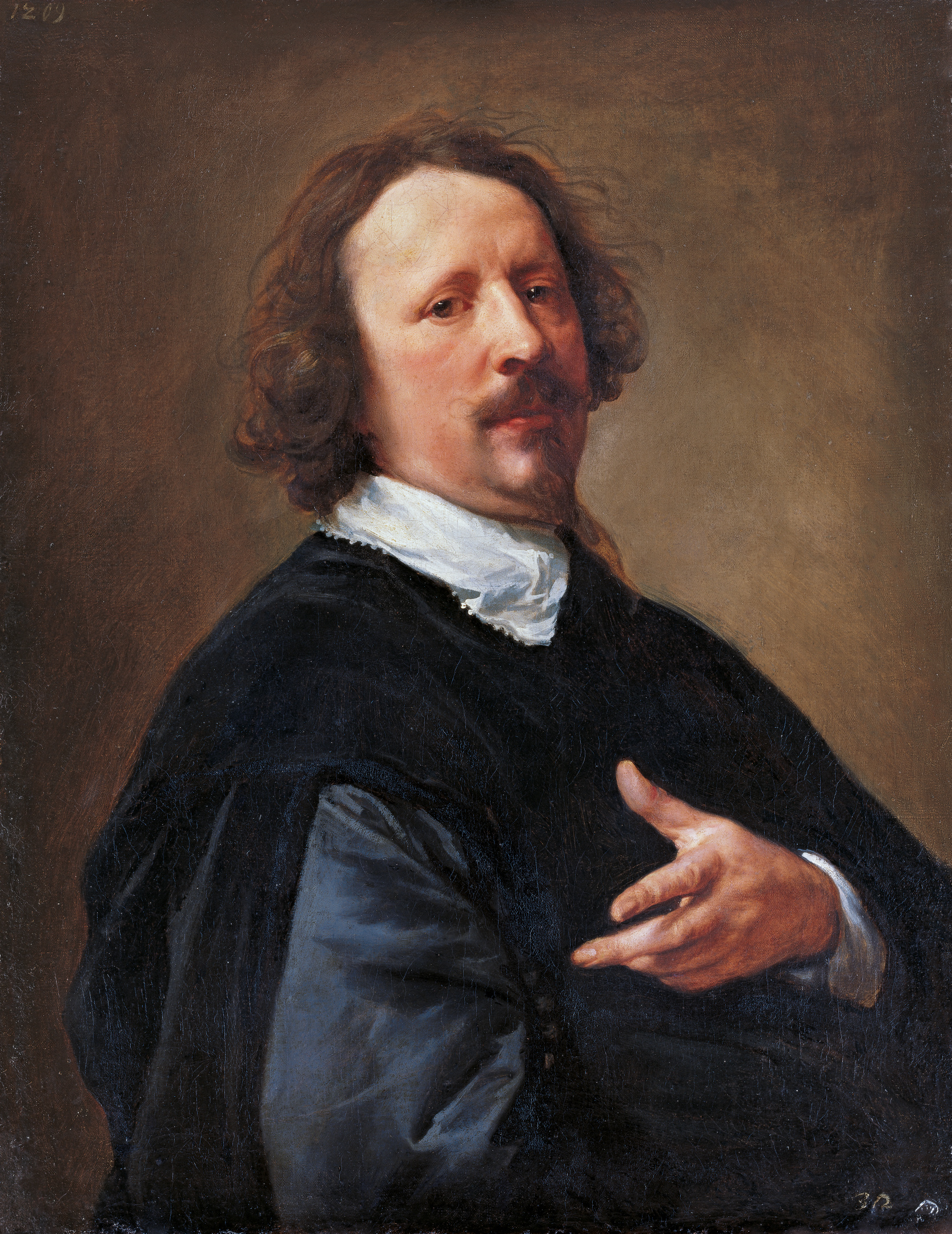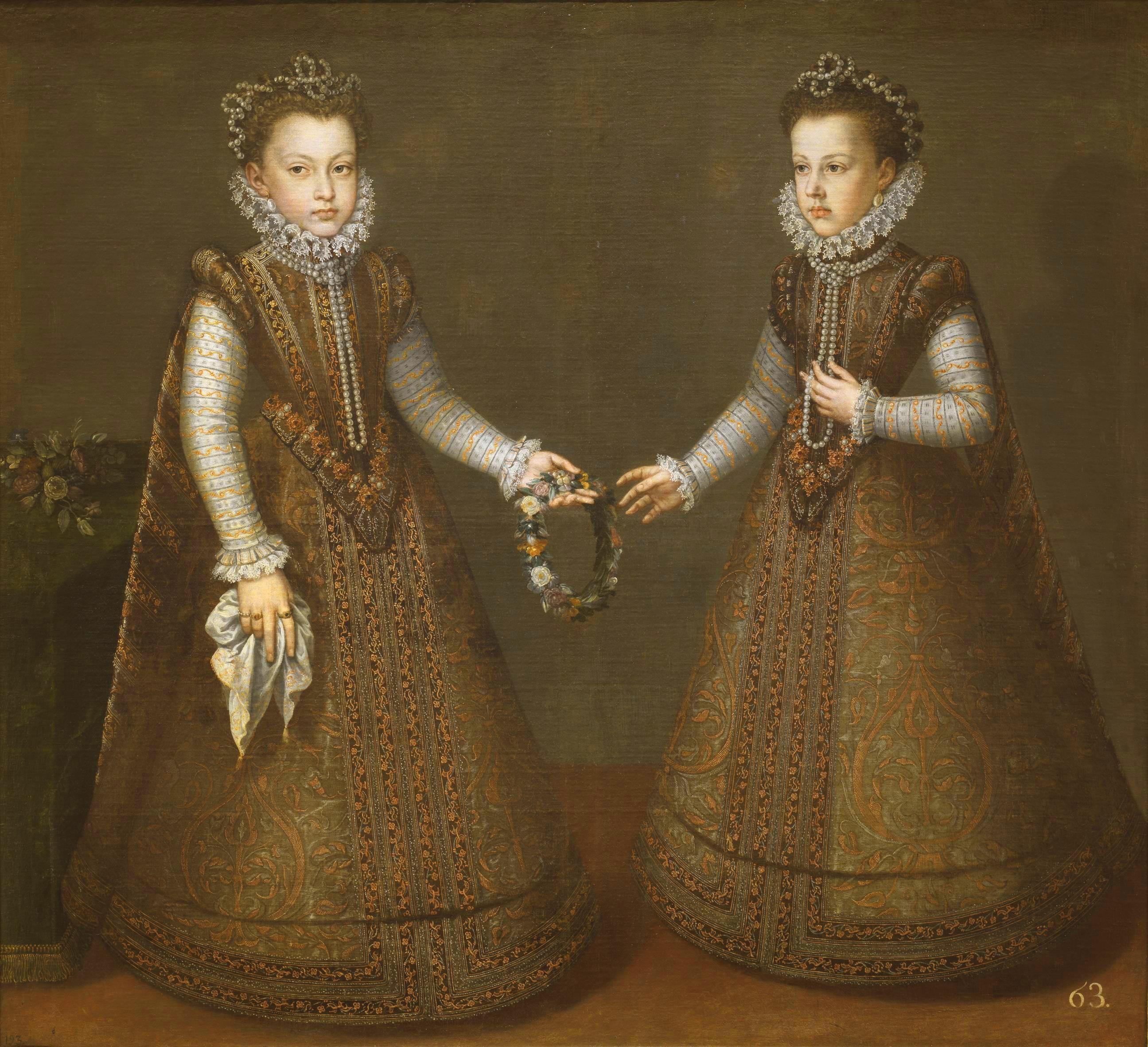|
Philippe-Charles, 3rd Count Of Arenberg
Philippe-Charles d'Arenberg (18 October 1587 in Barbancon – 25 September 1640 in Madrid Madrid ( , ) is the capital and most populous city of Spain. The city has almost 3.4 million inhabitants and a metropolitan area population of approximately 6.7 million. It is the second-largest city in the European Union (EU), an ...) was the third sovereign prince of Arenberg and 6th Duke of Aarschot. He was a leading figure in the political life of the Spanish Netherlands. Life Arenberg was the son of Charles de Ligne, 2nd Prince of Arenberg and Anne de Croy, daughter of Philipe de Croÿ, Duke of Aerschot. He was named Duke of Aarschot in 1616, and attained the highest honors in the Habsburg Netherlands, including the Order of the Golden Fleece. As duke he was the first lord temporal in the States of Brabant, and in the Estates General of 1632. Marriage and children He married three times: * on 21 September 1610 with Pierre Hippolyte Anne de Melun, Baronesse de Caum ... [...More Info...] [...Related Items...] OR: [Wikipedia] [Google] [Baidu] |
Philippe Charles Darenberg
Philippe is a masculine sometimes feminin given name, cognate to Philip. It may refer to: * Philippe of Belgium (born 1960), King of the Belgians (2013–present) * Philippe (footballer) (born 2000), Brazilian footballer * Prince Philippe, Count of Flanders, father to Albert I of Belgium * Philippe d'Orléans (other), multiple people * Philippe A. Autexier (1954–1998), French music historian * Philippe Blain, French volleyball player and coach * Philippe Najib Boulos (1902–1979), Lebanese lawyer and politician * Philippe Coutinho, Brazilian footballer * Philippe Daverio (1949–2020), Italian art historian * Philippe Dubuisson-Lebon, Canadian football player * Philippe Ginestet (born 1954), French billionaire businessman, founder of GiFi * Philippe Gilbert, Belgian bicycle racer * Philippe Petit, French performer and tightrope artist * Philippe Petitcolin (born 1952/53), French businessman, CEO of Safran * Philippe Russo, French singer * Philippe Sella, French rugby ... [...More Info...] [...Related Items...] OR: [Wikipedia] [Google] [Baidu] |
States-General Of The Netherlands
The States General of the Netherlands ( nl, Staten-Generaal ) is the supreme bicameral legislature of the Netherlands consisting of the Senate () and the House of Representatives (). Both chambers meet at the Binnenhof in The Hague. The States General originated in the 15th century as an assembly of all the provincial states of the Burgundian Netherlands. In 1579, during the Dutch Revolt, the States General split as the northern provinces openly rebelled against Philip II, and the northern States General replaced Philip II as the supreme authority of the Dutch Republic in 1581. The States General were replaced by the National Assembly after the Batavian Revolution of 1795, only to be restored in 1814, when the country had regained its sovereignty. The States General was divided into a Senate and a House of Representatives in 1815, with the establishment of the United Kingdom of the Netherlands. After the constitutional amendment of 1848, members of the House of Representatives w ... [...More Info...] [...Related Items...] OR: [Wikipedia] [Google] [Baidu] |
House Of Ligne
The House of Ligne is one of the oldest Belgian noble families, dating back to the eleventh century.''Genealogisches Handbuch des Adels, Fürstliche Häuser'' XIV. "Ligne". C.A. Starke Verlag, 1991, pp. 495-500. . The family's name comes from the village of where it originated, between Ath and Tournai in what is now the Hainaut province of Belgium. History Their progressive rise in the nobility began as barons in the twelfth century, counts of Fauquemberg and princes of Épinoy in the sixteenth century, then princes of Amblise in 1608. The family became Imperial counts on 18 December 1544, then Lamoral I received from Emperor Rudolf II the title of Prince of the Holy Roman Empire as ''Prince de Ligne'' on 20 March 1601, for all of his agnatic descendants, both male and female. Compensation for loss of the Imperial County of Ligne (Fagnolles, since that barony had become seat of the county in 1789) as a result of the Peace of Lunéville consisted of substitution of the secul ... [...More Info...] [...Related Items...] OR: [Wikipedia] [Google] [Baidu] |
Arenberg Family
The House of Arenberg is an aristocratic lineage that is constituted by three successive families that took their name from Arenberg, a small territory of the Holy Roman Empire in the Eifel region. The inheritance of the House of Croÿ-Aarschot made the Arenbergs the wealthiest and most influential noble family of the Habsburg Netherlands. The family's Duchy of Arenberg was mediatized in 1810. As such, the Arenbergs belong to the small group of families that constitute the ''Hochadel'' (). The current head of the house bears the title of Duke of Arenberg, while all other members are princes or princesses. They all enjoy the style of Serene Highness. In 1827 Prince Pierre d'Arenberg, third son of the 6th Duke of Arenberg, was made a Peer of France and his descendants are now a French branch of the family (French Dukes and Peers). Lords of Arenberg Counts of Arenberg Princely Counts and later Dukes of Arenberg The marriage contract in 1547 between Margaret de la Marc ... [...More Info...] [...Related Items...] OR: [Wikipedia] [Google] [Baidu] |
1640 Deaths
Year 164 ( CLXIV) was a leap year starting on Saturday (link will display the full calendar) of the Julian calendar. At the time, it was known as the Year of the Consulship of Macrinus and Celsus (or, less frequently, year 917 ''Ab urbe condita''). The denomination 164 for this year has been used since the early medieval period, when the Anno Domini calendar era became the prevalent method in Europe for naming years. Events By place Roman Empire * Emperor Marcus Aurelius gives his daughter Lucilla in marriage to his co-emperor Lucius Verus. * Avidius Cassius, one of Lucius Verus' generals, crosses the Euphrates and invades Parthia. * Ctesiphon is captured by the Romans, but returns to the Parthians after the end of the war. * The Antonine Wall in Scotland is abandoned by the Romans. * Seleucia on the Tigris is destroyed. Births * Bruttia Crispina, Roman empress (d. 191) * Ge Xuan (or Xiaoxian), Chinese Taoist (d. 244) * Yu Fan, Chinese scholar and official (d ... [...More Info...] [...Related Items...] OR: [Wikipedia] [Google] [Baidu] |
1587 Births
Events January–June * February 1 – Queen Elizabeth I of England signs the death warrant of her cousin Mary, Queen of Scots, after Mary has been implicated in a plot to murder Elizabeth. Seven days later, on the orders of Elizabeth's privy council, Mary is beheaded at Fotheringhay Castle. * February 12– 24 – Period of exceptionally severe cold in western Europe. * April 29 – ''Singeing the King of Spain's Beard'': On an expedition against Spain, English privateer Sir Francis Drake leads a raid in the Bay of Cádiz, sinking at least 23 ships of the Spanish fleet. * May 19 – John Davis sets out from Dartmouth, Devon, for a third attempt to find the Northwest Passage. July–December * July 22 – Roanoke Colony: A group of English settlers arrive on Roanoke Island off North Carolina, to re-establish the deserted colony. * August 18 – According to legend, Saul Wahl is named king of Poland; he is deposed the following day. * ... [...More Info...] [...Related Items...] OR: [Wikipedia] [Google] [Baidu] |
New York Metropolitan Museum Of Art
The Metropolitan Museum of Art of New York City, colloquially "the Met", is the largest art museum in the Americas. Its permanent collection contains over two million works, divided among 17 curatorial departments. The main building at 1000 Fifth Avenue, along the Museum Mile on the eastern edge of Central Park on Manhattan's Upper East Side, is by area one of the world's largest art museums. The first portion of the approximately building was built in 1880. A much smaller second location, The Cloisters at Fort Tryon Park in Upper Manhattan, contains an extensive collection of art, architecture, and artifacts from medieval Europe. The Metropolitan Museum of Art was founded in 1870 with its mission to bring art and art education to the American people. The museum's permanent collection consists of works of art from classical antiquity and ancient Egypt, paintings, and sculptures from nearly all the European masters, and an extensive collection of American and moder ... [...More Info...] [...Related Items...] OR: [Wikipedia] [Google] [Baidu] |
Rubens
Sir Peter Paul Rubens (; ; 28 June 1577 – 30 May 1640) was a Flemish artist and diplomat from the Duchy of Brabant in the Southern Netherlands (modern-day Belgium). He is considered the most influential artist of the Flemish Baroque tradition. Rubens's highly charged compositions reference erudite aspects of classical and Christian history. His unique and immensely popular Baroque style emphasized movement, colour, and sensuality, which followed the immediate, dramatic artistic style promoted in the Counter-Reformation. Rubens was a painter producing altarpieces, portraits, landscapes, and history paintings of mythological and allegorical subjects. He was also a prolific designer of cartoons for the Flemish tapestry workshops and of frontispieces for the publishers in Antwerp. In addition to running a large workshop in Antwerp that produced paintings popular with nobility and art collectors throughout Europe, Rubens was a classically educated humanist scholar and diplomat ... [...More Info...] [...Related Items...] OR: [Wikipedia] [Google] [Baidu] |
Gaspar De Crayer
Gaspar de Crayer or Jasper de CrayerName variations: Caspar de Crayer and Gaspard de Crayer (18 November 1584 – 27 January 1669) was a Flemish painter known for his many Counter-Reformation altarpieces and portraits. He was a court painter to the governors of the Southern Netherlands and worked in the principal cities of Flanders where he helped spread the Rubens style.Gaspar de Crayer at the Hans Vlieghe. "Crayer, Gaspar de." Grove Art Online. Oxford Art Online |
Frans Snyders
Frans Snyders or Frans Snijders (11 November 1579, Antwerp – 19 August 1657, Antwerp) was a Flemish painter of animals, hunting scenes, market scenes and still lifes. He was one of the earliest specialist animaliers and he is credited with initiating a wide variety of new still-life and animal subjects in Antwerp. He was a regular collaborator with leading Antwerp painters such as Peter Paul Rubens, Anthony van Dyck and Jacob Jordaens.Matthias Depoorter, ''Frans Snijders'' at barokinvlaanderen Life Snyders was born in Antwerp as the son of Jan Snijders, the keeper of a wine inn frequented by artists. According to legend the famous 16th-century painter |
Paul De Vos
Paul de Vos (1591/92, or 1595 in Hulst – 30 June 1678 in Antwerp) was a Flemish Baroque painter who specialized in mainly in compositions of animals, hunting scenes and still lifes. He worked for an elite clientele and was a regular collaborator of leading Antwerp painters such as Anthony van Dyck and Peter Paul Rubens.Katlijne Van der Stighelen and Arnout Balis. "Vos, de (i)."] Grove Art Online. Oxford Art Online. Oxford University Press. Web. 9 January 2017 Life De Vos was born in Hulst near Antwerp, now in the Dutch province of Zeeland. Little is known of his childhood. His father moved with his family to Antwerp in 1596. In 1604 Paul de Vos became a pupil of the obscure painter Denijs van Hove in Antwerp. In 1605 he continued his studies under the little-known painter David Remeeus (1559–1626) with whom his older brother Cornelis also trained. He later also trained with the equally obscure Eduard Snayers. De Vos became a master and joined the guild of St. Luke at a ... [...More Info...] [...Related Items...] OR: [Wikipedia] [Google] [Baidu] |
Infanta Isabella Clara Eugenia Of Spain
Isabella Clara Eugenia ( es, link=no, Isabel Clara Eugenia; 12 August 1566 – 1 December 1633), sometimes referred to as Clara Isabella Eugenia, was sovereign of the Spanish Netherlands in the Low Countries and the north of modern France with her husband, Archduke Albert VII of Austria. Their reign is considered the Golden Age of the Spanish Netherlands. Isabella was one of the most powerful women in 16th- and 17th-century Europe. Early life Childhood Isabella Clara Eugenia of Austria was born in the Palacio del bosque de Valsaín, Segovia on 12 August 1566. She was the first surviving daughter of King Philip II of Spain and his third wife, Elisabeth of Valois. Her father was reportedly overjoyed at her birth and declared himself to be happier on the occasion than he would have been at the birth of a son. He already had a male heir, Carlos, Prince of Asturias, but father and son had never developed a close rapport and frequently lived in conflict with one another. ... [...More Info...] [...Related Items...] OR: [Wikipedia] [Google] [Baidu] |









